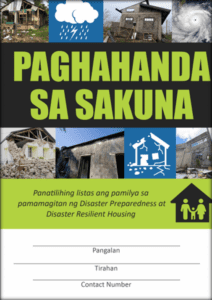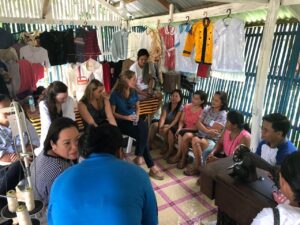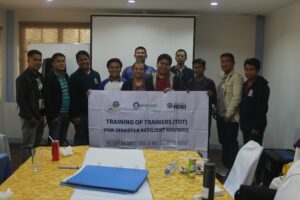
Everyone Asks: How About Sustainability?
Build Change
Author
We are in a constant search for sustainability. Every day, we think of innovative ways we can make our programs sustainable, decreasing communities’ dependence on the help we provide, enabling them to run the programs even after we leave. The question is HOW?
Here at Build Change-Philippines, sustainability is one of our key considerations when delivering programs. We ensure we design, develop, and implement programs that deliver permanent change and enable communities to follow safe construction practices, all by themselves. Our “Steps to Sustainability” are:
- DESIGN and DEVELOP sustainable materials;
- COMMUNICATE materials to partners;
- FIELD TEST the materials with the community and implementing partners; and,
- TRAIN the trainers.
The needs of our communities are constantly changing. Build Change deliberately DESIGNS and DEVELOPS sustainable materials so that we ensure our programs are adaptable to these evolving needs. For example, materials designed for our Disaster Resilient Housing Program can be updated, combined with new materials, or used for another program which may be interrelated. This way, materials can evolve to take on a holistic approach, targeting multiple community issues using one sustainable set of tools.

Another way that we design our programs to be sustainable is through our homeowner-driven approach. Build Change COMMUNICATES with homeowners, builders, and partner institutions to understand their needs, and how to meet them. Involving these stakeholders at the conceptualization phase creates not only commitment, but also ownership. Once you feel that something is yours and that you are a part of it, you give greater importance to it. Program-wise, you want to make sure it works and becomes successful. If participants see something that does not fit or add up, they will initiate a fix and improve it themselves, because they not only want the program to continue, but also to prosper.

Moreover, communicating with your target audience localizes your approach, and identifies which strategies make the most sense based on the community’s unique culture, beliefs, and values. Materials that are sensitive to these critical factors show respect to the local community, which is a must-have, especially if programs are to continue over the long-term.
The next step is for any materials we develop to undergo a FIELD TEST. Field testing gives the materials a thorough trial with the target audience in the environment in which they will be used. Just like the COMMUNICATE step, the goal of this step is to gather real-life, local feedback from the community and implementing partners on the materials under development. For the staff of partner institutions, for example, they will ultimately be responsible for presenting the materials they are piloting to their clients. Materials related to safe construction methods may be technical, and our partners must make sure they are comfortable discussing the topic, presenting the materials, and answering questions either in the office or out in the community. The objective of field testing is to get real comments and feedback to improve the materials (and overarching program if necessary). Once the materials and programs are localized, and all comments and feedback are taken into consideration, the communities are one step closer to carrying out the program by themselves.

Last but not least is to TRAIN the trainers by delivering Training of Trainers (TOT) sessions. One of the most effective ways to do this is to identify local community members and empower them with the knowledge to teach others. These community members should fully understand the community needs, speak the local dialect, and should be trusted within the community. Conducting a successful Training of Trainers requires a deep understanding of even the smallest details: how to deliver the materials, how to answer questions, which words to use, which points to emphasize, etc. We ensure trainers are capable, well-equipped and confident, and also that trainings are uniform and consistent. Ultimately, using the Train the Trainers approach, we build a pool of competent trainers who can reach more people and replicate our program delivery, making it sustainable and accessible to a wider audience.

In all of these efforts, we ultimately want our community members and partners to own our programs, because committed people, who believe in your mission, will work hard to make it sustainable.
Support resilient housing worldwide
Join us in preventing housing loss caused by disasters.
Donate nowNewsletter
Sign up for our newsletter to receive updates on our latest news, events, and more.